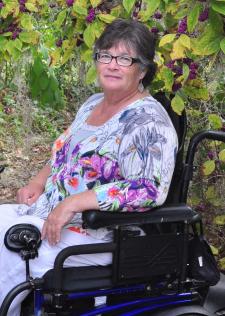The Story of an Essay

The Fall 2012 issue of the North American Review includes my essay "I Am Here, in This Morning Light." It was my second publication ever in what I thought of as a "fancy" journal, which was a big deal for a sixty-year-old woman with no academic background in writing and little knowledge of literary publishing. A woman who often had a hot flash and stumbled her words whenever she managed to say out loud that she was a writer.
Afterwards, on my applications to residencies, queries for that first novel, and cover letters to other journals, having two "major" publications made it seem more than a fluke that I was publishable. I learned to take each moment of success in this literary world I was learning about and build on it to the next. In my mind that essay had done its job—on to the next. But these days I've noticed that essays have their own lives. Their stories start before any publication and continue after.
"I Am Here, in This Morning Light" is, on its surface, a chronicle of the thirty-three hours before, during, and after a kayak trip. The writing of it began as a pre-trip checklist and then existed as part of the daily notes I scribbled out on yellow pads during my camping trips. A decade later I rummaged once again through the stack of creased and faded yellow pads for inspiration and this time decided there was something there to work with and the first drafts of the essay took shape. The computer folder for the essay still has eighteen drafts in it. I'm sure there were more. I got all the help I could figure out to get. For instance, sometimes established writers or journal editors offer their services as fundraisers. I'd donate and get feedback on the essay, usually helpful, sometimes not. Well, of course, even not helpful feedback is of value. At some point, maybe in draft sixteen, I figured out what the story was really about and the essay coalesced into its final shape.
I didn't know much about journals, but at a conference I asked one of the speakers, an editor of a journal, what it meant to be getting rejections that included feedback and encouragement. She said that was good. She said it meant that if I kept sending the piece out it would probably eventually be accepted. I'd found a tiered list of journals online so I started at the top and worked down. I figured if the essay was "good enough" as the editor had implied it must be, then it was all a matter of statistics. After twenty-seven rejections, the North American Review (which was one of the first places I'd sent it to) accepted my essay.
And all this time later, the story of the essay continues. It was reprinted this year in Best Women's Travel Writing, Volume 11. And it will be included as part of my memoir, A Certain Loneliness, which is due out from the University of Nebraska Press in 2018.
Recommended
Nor’easter
Post-Op Appointment With My Father
Cedar Valley Youth Poet Laureate | Fall 2024 Workshop






